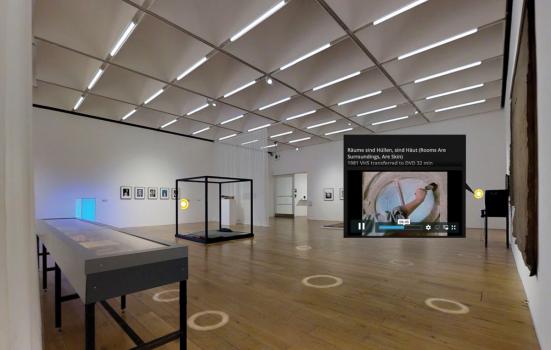Report into partnership activities undertaken by the national museums raises questions about the capacity for and value of post-pandemic digital provision.

V21 Artspace/Creative Commons
The pandemic has raised questions about the digital capacity of the museum sector, a study commissioned by the Department for Culture, Media and Sport (DCMS) has said.
The fourth annual report of the National Museums' Partnership, which covers the period of the height of pandemic between April 2020 to March 2021, found that many museums extended their digital offer in order to reach audiences unable to visit in person due to restrictions.
It concluded that it is not clear if online programming will remain a priority post-pandemic, and warns that holding activities online "may reduce opportunities for income generation".
READ MORE:
It adds that further work is required to understand whether the expansion of digital has improved diversity and questions the digital capacity within the sector.
"The pandemic necessitated a number of changes in behaviours — both in how audiences engaged with museums and how museums facilitated that engagement," the report states.
"The shift to digital provision is perhaps the most notable change, however only time will tell whether we will continue to see a large proportion of online programming or whether activities will shift back to on site and in person in the absence of restrictions."
Engaging audiences
The report found that holding events online enabled museums to engage wider and larger audiences, and try new initiatives.
"However it should be noted that holding activities online may reduce opportunities for income generation that can be gained through on site visits (such as retail and catering) and that further data is likely to be required on the make-up of digital audiences before definitive conclusions can be made about improved diversity," the report adds.
"It is also important to note that the shift to digital provision, within the national museums and elsewhere in the sector, is dependent on the presence of in-house skills, resources and infrastructure.
"The pandemic has raised questions in regards to digital capacity within the sector. It’s possible that further partnership work, for example, in collaboration with the digital and tech sectors, may help address this."
Fiona Morris, Chief Executive of The Space, which works with small to mid-scale organisations in the cultural sector, helping them to develop their digital strategies, said efforts by museums to keep in contact with their visitors and their communities during the pandemic "showed the culture sector at its best".
"Even though the group of organisations that we work with are predominantly volunteer-based organisations, many of whom are from the older generation and were sheltering, they still they rolled their sleeves up and figured our what they could do online.
"But I wouldn't expect them to continue doing that post-pandemic because they don't need to do that.
"[Digital is] something that we can do alongside what we do now that the doors are back open, which enables us to be much more inclusive about who we speak to, to create much more embedded communities of engagement online.
"People are able to drop in and drop out, talk to one another and have the kinds of conversation about collections and the significance of the objects in those collections - to make links with museums far further afield than they ever previously had.
"We are now at a place where we are discussing what hybrid means - to have both a physical presence and to have something online."
Income generation
Morris said that, contrary to concerns raised about the impact of a digital offer on revenue streams, it is successfully being used to drive increase income in a number of cases.
"Some museums are making money from gaming companies - offering objects and imagery for computer environments.
"If you've created 3D scans of objects and you own the rights then you can licence those - there are all sorts of places and opportunities to look at.
"The online context [also] allows you to have a different sort of conversation potentially with a group of people you are engaging with. If they are intrigued or inspired or interested they can come inot the live context in order to experience it.
"It can be an incentive to come and spend. The online presence definitely works as a gateway entry point."




